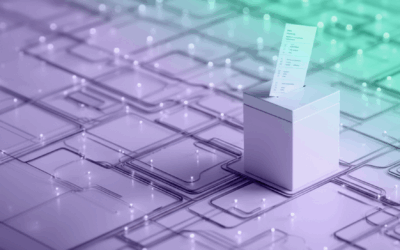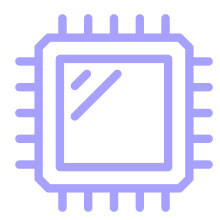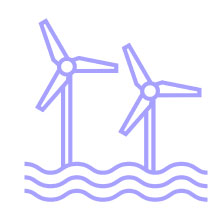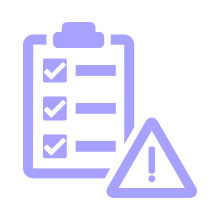Taking the stage after being inaugurated as the 47th President of the United States on January 20th, President Trump reiterated a thought he had shared often during his campaign, saying, “I always say ‘tariffs’ is the most beautiful word to me in the dictionary.” It wasn’t surprising that he said this. It was clear long before this moment that President Trump was even more committed to using tariffs to reshape the US economy than he had been during his first term.
However, “he really likes tariffs” is not particularly helpful to anyone trying to make investment decisions under this administration. At Capstone, our goal is to make predictions that are actionable and helpful in informing investment and business decisions. Given that, I wanted to take a moment to revisit some of our biggest predictions about President Trump’s trade policy from the last year and to look at what we got right, what we got wrong, and what we have learned as a result.
Universal Tariffs
In one of our first notes after the election, we wrote, “Capstone assigns a 75% probability that the incoming Trump administration will announce a universal tariff on imports by the end of 2025. Trump has said the tariff could be 10%-20%.” I remember getting a lot of pushback both internally and from clients when we published this note. “A 20% tax on everything we import? Isn’t that inflationary?” We had numerous similar conversations over a few weeks. After a flurry of trade deals over the summer, exports from most of the US’s largest trading partners face 15-20% tariffs.
Our rationale for this call was simple. Trump’s desire to impose tariffs was clear, something that was consistently reinforced in our outreach conversations, many of which also highlighted the revenue-generating potential of the tariffs as a key reason for his interest. We argued that President Trump could utilize a relatively unknown statute at the time, the International Emergency Economic Powers Act (IEEPA), to impose broad tariffs without Congressional Approval. The combination of President Trump’s strong desire to impose tariffs and ability to act unilaterally made a pretty compelling case for action in our view.
The thing we didn’t anticipate was the cadence and speed with which the administration would move as it advanced President Trump’s tariffs. At the time we wrote that note, it still seemed likely that President Trump’s US Trade Representative (USTR) from his first term, Robert Lighthizer, would have a key role in steering his trade policy in his second term. A seasoned trade lawyer, Lighthizer favored a methodical approach during President Trump’s first term. US actions during its trade dispute with China followed a predictable pattern of tariffs being announced well before they were imposed, often to allow time for negotiations to take place and businesses to adjust. It seemed reasonable to assume that President Trump would follow a similar approach the second time around, as the announcement of tariffs on its own would likely bring many trading partners to the negotiating table.
President Reagan’s director of personnel, Scott Faulkner, once said, “personnel is policy,” and in this case, I think it was especially true. Without the more traditional Lighthizer in the room, Peter Navarro steered much of President Trump’s early trade policy. I think this was one of the biggest factors behind the less cautious approach this time around.
As I think about the predictions we are making for trade policy during the remainder of President Trump’s term, I naturally have to think about the timing and process by which President Trump will impose tariffs. What I think we have learned so far is that President Trump is not afraid to spill some blood, to impose tariffs, and then negotiate later. There have been numerous examples of this so far this year: the triple-digit tariffs on China in the spring, the 50% tariffs on steel and aluminum from the summer that have yet to be meaningfully diluted, and the tariffs imposed on India due to its purchases of Russian oil, to name a few.
With that said, I think there has been a notable shift toward some of the more traditional trade statutes that Lighthizer might have favored. Since “Liberation Day,” statutes invoked by President Trump during his first term, like Section 232 and 301, have come back to the forefront. I think this is due in no small part to other members of President Trump’s trade team, including Treasury Secretary Scott Bessent, USTR Jameison Greer, and Secretary of Commerce Howard Lutnick, all getting their feet under them. As we think about the remainder of President Trump’s term, I think it is likely that this will continue to be the case, and that the things we write will feature these more predictable statutes more than actions mirroring the chaotic rollout of IEEPA tariffs on Liberation Day.
China Tariffs
In our 2025 Trade Policy Preview, we stated, “Capstone believes higher Section 301 tariffs on Chinese imports will be effective in Q2 2025.” We noted the 60% rate President Trump promised on the campaign trail was the most likely place where tariffs would be set, something we would double down on in later notes. We even noted that China would likely target US soybean exports for retaliation, something that has aged rather well given recent headlines.
An analysis by the Peterson Institute puts the average US tariff rate on imports from China at 57.6% – pretty close to the 60% we had mentioned. We had the timing, the rate, even the Chinese retaliation pretty much right in our preview. What did we miss?
The scope of the tariffs and the process used to impose them were where things were a bit different in this case. Like the universal tariffs, it was the deviation from the more traditional Lighthizer approach that was to blame here. President Trump used Section 301 to impose targeted tariffs on China during his first term. These tariffs could be raised or expanded relatively easily and quickly without any major risk of legal action unwinding them. A targeted approach made sense at the time we were writing our preview note, it would enable the US to decouple from China in sectors that were strategically important while sparing consumers.
Instead of following the more deliberate playbook developed by Robert Lighthizer, the Trump administration came for China with guns blazing. It imposed 10% tariffs on all imports from China under IEEPA less than a month into the new administration and before Commerce Secretary Howard Lutnick and USTR Jamieson Greer had been confirmed by the Senate. These blanket tariffs were increased on Liberation Day and have been supplemented by additional, product-specific tariffs under Section 232 that stack on top of them. Here again, I think much of the credit goes to Peter Navarro.
Thinking about the part of this that we missed, I am still not sure that we will be wrong in the long run. We recently published a note where we put 65% odds on the Supreme Court striking down President Trump’s IEEPA tariffs, something that could unravel the tariffs imposed on imports from China this year. If that happens, a combination of Section 301 and Section 232 is likely to provide the best playbook to replace them. It’s possible that if USTR is forced to go line by line and select products to target with tariffs, they will spare some of the consumer goods that are currently being hit.
Product-specific Tariffs
The third area where we have made some big calls this year has been product-specific tariffs, namely those imposed under Section 232. This is an area where the story has not fully played out yet. We are still waiting for many of the Section 232 investigations initiated earlier this year to conclude, but enough has happened that I think we have some good data points to work with.
With Section 232 investigations across the board, our view has been that tariffs are very likely, they are coming sooner than expected, and that the tariffs imposed are likely to be significant (25% or more), but that tariffs imposed on traditional US allies can be weakened as a result of negotiations. In some cases, like with semiconductors, we were quick to say a Section 232 investigation would be initiated by the Trump administration, something they later did.
So far, Section 232 investigations initiated this year into imports of lumber and copper have produced tariffs, matching our expectations in many ways. It appears that many of President Trump’s other investigations will conclude with similar results by the end of the year. We have also already seen many US allies reach deals to reduce Section 232 tariffs, even on products for which the investigation has not concluded.
What has surprised me about the way President Trump has deployed Section 232 is some of the unique ways in which he has tailored remedies when they are announced. Here, the Trump administration’s approach has differed somewhat from the more aggressive approach seen with the IEEPA tariffs placed on imports from individual countries.
As I already mentioned, key trading partners like the EU were able to negotiate lower tariff rates on lumber and furniture before the investigation had even been completed. In addition, in both the copper and lumber investigations, we saw the scope of products covered by new tariffs reduced relative to what had been suggested in the executive orders initiating the investigations. The Trump administration also employed phase-ins for tariffs in some areas and gave US producers the opportunity to request that products be added to the scope of the tariffs through inclusion processes.
As I think about the Section 232 investigations that remain uncompleted, investigations that target key sectors including semiconductors, pharmaceuticals, and critical minerals, I believe this more surgical approach is increasingly more likely.
What we are taking away from this
Revisiting these calls and thinking through the things that we got right and the things that we got wrong, I think there are two takeaways that can be applied to our future research:
- “Personnel is policy” – I think we have seen the shift happen before our eyes, and in many ways, the “move fast and break things” ethos of the early part of the year is being pushed to the side. However, that does not mean that it will always be the case. We will be diligently monitoring who is shaping the President’s views on trade, as it is something that is constantly changing. This will remain a key focus for us in our outreach process.
- Avoid anchoring too heavily to history – As many are probably aware, Capstone analysts love to look at how often something has happened before in assigning probabilities to events that have not yet happened. While I continue to think this is useful for understanding what is likely to happen at a very general level, I think that when it comes to the specifics of what trade policy will look like, things like tariff rates, the scope of products covered, and the timing of tariffs, what this administration has done lately is going to be a better guide than what they did during President Trump’s first term. I think this is especially relevant for things like Section 232 investigations.
Read more from Andrew:
Trump’s Movie Tariff Effort Faces Key Obstacles
Section 232 Could Sink US Port Revenues
President Trump’s Tariffs Have Shocked the World. What Now?




























